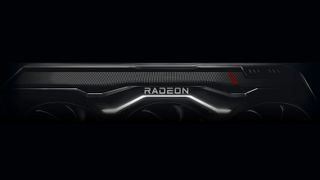During yesterday's RX 7000 series live stream, AMD announced version 3.0 of its FidelityFX Super Resolution (FSR). This new version promises to be a DLSS 3 competitor by combining AMD's Fluid Motion Video frame generation technology with FSR upscaling. FSR 3 will arrive sometime in 2023, with promises of up to twice the frame rate of FSR 2.
Details on FSR 3's inner workings were slim to none, with AMD only providing rough performance estimates during the announcement. However, we expect AMD to give us the full details on FSR 3 closer to the technologies' release date later in 2023.
But, if FSR 3 follows in the footsteps of FSR versions 2 and 1, it could be an open-source frame generation and upscaling platform for all GPUs. FSR has never required proprietary hardware like Nvidia with DLSS, so there's a good chance FSR 3 will feature the same behavior.
The biggest takeaway from the announcement was that AMD Fluid Motion Frames technology is used in conjunction with FSR temporal upscaling for FSR 3. This tells us specifically that FSR 3 will indeed use some frame generation technology.
If you are not aware, AMD already has a frame generation technology known as AMD Fluid Motion Video. As the name suggests, this technology smoothes out video motion by adding additional frames to the video. As a result, we can extrapolate that Fluid Motion Frames is the 3D rendering version of this same technology and will allow AMD to add frame generation tech to FSR 3.
However, one thing worth mentioning is that DLSS 3 requires both Tensor Cores and an optical flow accelerator, which is only supported on 40 series GPUs. So AMD might need a hardware solution for FSR 3 to work. In addition, the required optical flow accelerator in DLSS 3 measures motion vectors between two frames so that DLSS can render and inject an artificial frame in-between the two real frames.
As a result, AMD will need an equivalent motion vector solution that can measure motion between two frames if it wants to utilize frame generation. However, we don't know how AMD will solve this problem. It can go the same route as Nvidia by building a physical motion vector unit right on the GPU, or it can go the software route with a motion vector algorithm that runs on the GPU cores.
If AMD goes for the former route, FSR 3 will potentially be limited to RDNA3 GPUs or any other AMD GPU with motion vector units inside. But if it's the latter, AMD can run FSR 3 on any GPU, as long as the GPU has enough raw horsepower to power through FSR 3's computational requirements.


